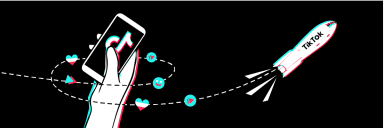By Jeff Smith, SVP, Product Leadership, Ad Effectiveness, Nielsen
At a recent gathering for CMOs, I found myself pulled into a conversation about how marketing chiefs justify their investment in branding online. Time and again, these men and women are asked to tie those efforts back to bottom-line results. It became clear that folks are struggling to quantify their return on investment.
Below are the top three questions CMOs wrestle with when trying to explain their digital investments and how our group answered them.
Why Should We Move More Brand Advertising Dollars Into Digital?
As consumers spend more of their time on computers, tablets and phones, more advertising money has moved online. This has led to the development of richer creative formats that allow marketers to create experiences that move beyond direct-response tactics and into immersive experiences—video and social, for example—that are better exploited by brand messages.
Moreover, consistent multi-platform metrics are emerging that allow us to compare the relative efficacy of different media and make more informed decisions based on real return on investment.
At Nielsen, we consider effective advertising to be that which reaches your desired audience, influences their opinion and ultimately affects their behavior at the cash register. We call this the three Rs—reach, resonance and reaction.
How Can We Parse the Effectiveness of Brand Advertising Online When There is so Much Data to Choose From?
We recently released the 2013 Online Advertising Performance Outlook, a survey of marketers, agencies and media sellers. We found that more than half of media buyers and one-in-three media sellers surveyed described themselves as “drowning in data.” One marketer described online metrics as a “Tower of Babel.” The good news is that we have the ability to address this ourselves by simplifying the lexicon.
The same study found that the number one metric marketers were interested in understanding, as in any advertising investment, is sales lift. But it’s not always technically feasible or cost effective to measure sales lift on every campaign you run. So it wasn’t surprising that the next two most-wanted metrics were ones that measured reach, like a gross rating point (GRP) and resonance, a brand lift measure. These leading indicators often correlate with sales lift.
Does TV Measurement Get More Like Digital, or Vice Versa?
Our discussion highlighted two factors generally at play—technology and simplicity. From a technological standpoint, digital media allows marketers to collect more granular data than traditional TV. But those differences are shrinking. As we move to a world of connected TV, everything becomes digital. While that might suggest that TV measurement should become more like digital measurement, we believe simplicity will reign. In fact, we’re already seeing digital metrics become more like TV with the industry adoption of an online GRP for a common, simple method of calculating reach and brand lift for calculating resonance.
So there you have it. The general consensus among the CMOs I spoke with was that the future for online branding is bright, as long as we keep it simple.
This article was originally published on Digiday.com.


